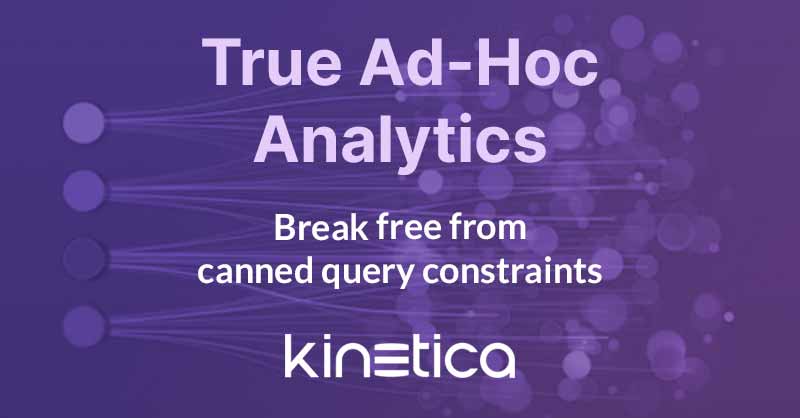Many database vendors often boast about their support for ad-hoc querying and analytics, but in practice, true ad-hoc capability remains elusive. While the term “ad-hoc” implies the ability to generate novel, unanticipated questions on the fly, the reality is that most databases require that data requirements be well-defined in advance. These requirements are then used to engineer the data for performance in addressing these known questions.
Data engineering, in this context, takes on various forms such as denormalization, indexing, partitioning, pre-joining, summarizing, and more. Put another way, data engineering exists to overcome the performance limitations of traditional databases. These techniques are employed to make data retrieval and analysis more efficient for anticipated queries. However, this approach falls short of the genuine ad-hoc flexibility that many users desire.
Over time, users of data have adapted to a model where their expectations have been managed to follow a somewhat linear process. This process typically involves documenting their data requirements, which are then prioritized among numerous other demands. Users may have grown accustomed to waiting for their specific set of questions to be answered by IT. However, the ever-evolving nature of business and the dynamic data landscape often means that users have moved on to new questions by the time their previous inquiries are addressed. This model, while once a standard approach, has become increasingly mismatched with the pace of today’s data-driven world, where insights need to be dynamic, immediate, and adaptable to rapidly changing needs.
The core issue with this traditional approach lies in its rigidity. When new, unanticipated questions arise, which is quite common in dynamic business environments, users face significant obstacles. In such cases, the process of re-engineering the data to accommodate the new questions can be time-consuming, resource-intensive, and disruptive to ongoing operations.
True ad-hoc capabilities should empower users to interact with data in a more natural, exploratory manner. This requires databases that can dynamically adapt to user inquiries without the need for extensive preparation.
The immense power of modern Graphics Processing Units (GPUs) has ushered in a new era of data analytics by enabling data-level parallelism. Unlike traditional approaches that necessitate pre-engineering and indexing of data, GPUs excel at scanning through massive datasets swiftly and efficiently. By harnessing their parallel processing capabilities, GPUs can simultaneously perform operations on multiple data points, avoiding the need for extensive data restructuring. This not only accelerates query performance but also empowers users to engage in genuine ad-hoc analysis, enabling dynamic exploration of data without constraints.
Moreover, significant advancements in generative AI are revolutionizing the landscape of ad-hoc, novel queries by enabling natural language interfaces such as Kinetica’s SQL-GPT. These interfaces leverage cutting-edge language models to facilitate spontaneous and intuitive data interactions. Instead of adhering to rigid query structures, users can simply ask questions in natural language, promoting a more dynamic and exploratory approach to data analysis. By fostering a more inclusive environment, these interfaces are democratizing data exploration, and driving more demand for ad-hoc vs canned queries.
While the idea of ad-hoc querying remains a common buzzword in the database industry, true ad-hoc capabilities are far from being the standard. Overcoming the limitations of traditional data engineering is crucial for empowering users to explore data freely and discover valuable insights without being confined to predetermined queries and structures.
Learn more about how you can do more with less with Kinetica.

